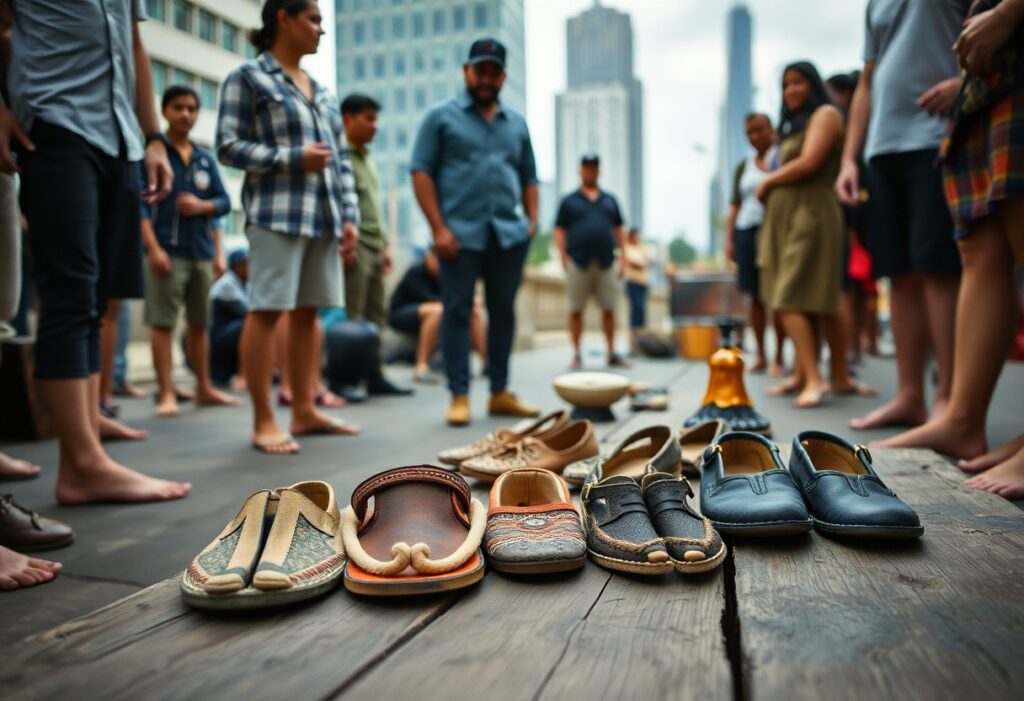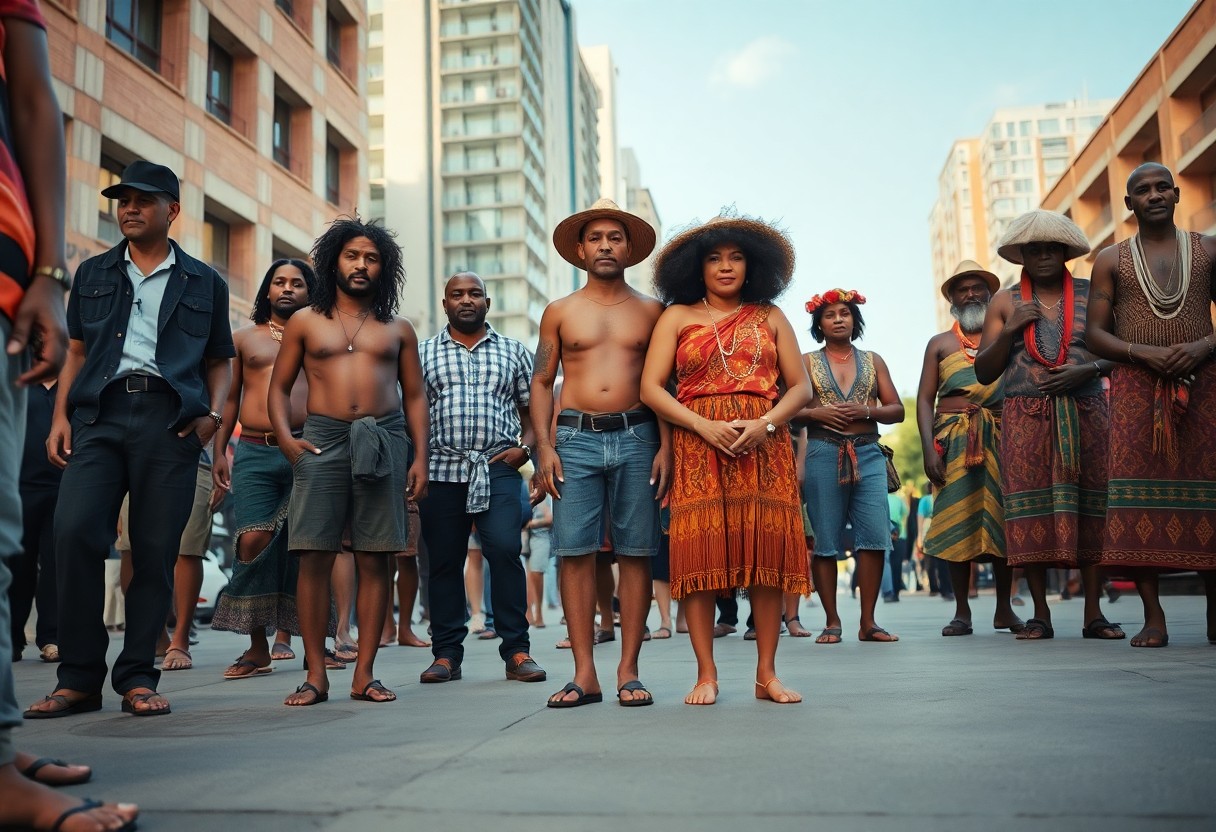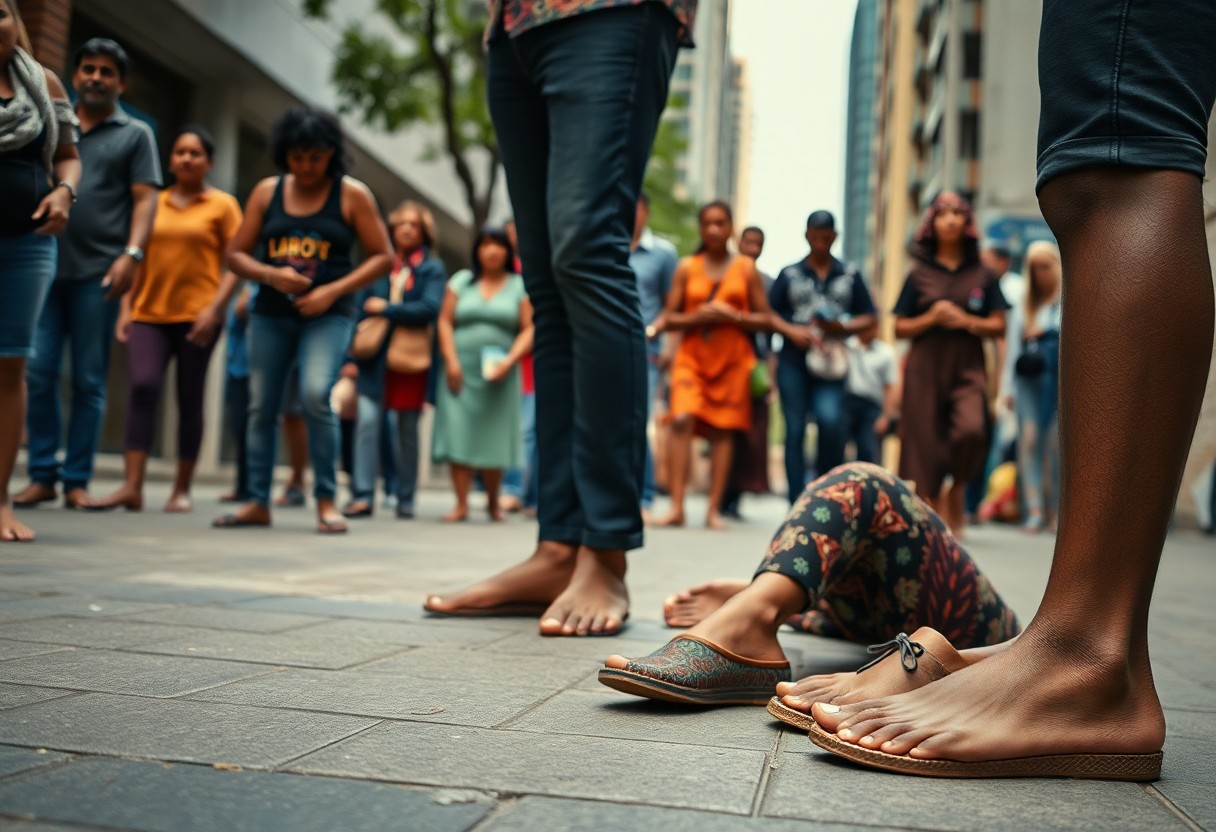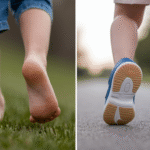
Diving into the realm of barefoot footwear through the fascinating lens of cultural anthropology reveals compelling stories that intricately link the rich traditions of Aboriginal cultures with the vibrant urban environment we experience today. As you explore this captivating evolution, you will discover how cultural values and practices surrounding minimalist footwear inform our perception of comfort, our deep connection to the earth, and various avenues for personal expression. Engaging with these profound themes not only enriches your understanding but also encourages a thoughtful reassessment of how the shoes you select can reflect more profound cultural significance and personal identity.

Unveiling the Connection Between Ancient Footwear Traditions and Modern Innovations
The contemporary footwear marketplace presents a vibrant tapestry that seamlessly intertwines ancient traditions with cutting-edge innovations, fostering an ever-growing appreciation for barefoot footwear. This journey not only pays tribute to traditional indigenous techniques but also adapts them thoughtfully to resonate with your modern lifestyle. By recognising the significance of historical practices, you can unearth a thrilling fusion of cultural appreciation and practical aesthetics within your daily footwear choices, ultimately enriching your personal style while paying homage to the past.
Examining Indigenous Foot Conditioning Techniques Versus Contemporary Practices
Indigenous cultures around the globe have employed specific conditioning techniques to fortify their feet, enabling them to navigate diverse terrains effectively. Techniques such as walking barefoot on various surfaces have strengthened the arches and muscles in ways that many modern interpretations frequently fail to replicate adequately. While minimalist footwear is designed to mimic these natural benefits today, they often fall short of providing the authentic experience that genuine contact with the earth offers, which is essential for cultivating natural foot strength and flexibility essential for optimal mobility.
Tracing the Evolution of Military Footwear: From Ancient Caligae to Contemporary Tactical Boots
The narrative of military footwear is a riveting tale of adaptation and innovation, evolving from the robust Roman caligae, crafted for strength and traction, to today's tactical boots that seamlessly blend protection with agility and comfort. An exploration of these transformations reveals a consistent theme: in challenging environments, functionality is paramount, necessitating gear that enhances endurance and mobility for servicemen and women.
The Roman caligae exemplified a sophisticated response to military demands, constructed from durable leather with an open-toe design for optimal ventilation. This ancient footwear featured thick soles that effectively absorbed shock and provided critical traction, crucial during combat scenarios. Fast forward to the present, and tactical boots are crafted using advanced materials such as Kevlar and waterproof membranes, significantly enhancing durability and performance. These modern designs incorporate padded collars and state-of-the-art cushioning systems to mitigate injuries during demanding military tasks. By appreciating the legacy of military footwear, it becomes evident how historical styles have paved the way for contemporary innovations, harmoniously marrying heritage, practicality, and cutting-edge technology to meet the needs of today’s warriors.

Analysing the Urban-Rural Footwear Disparity
The disparities in footwear choices between urban and rural settings reveal deep-seated cultural and practical distinctions. Urban environments often prioritise style and brand identity, while rural areas typically emphasise practicality and durability. As barefoot footwear rises in popularity, urban dwellers increasingly embrace its minimalist design, viewing it as both a fashion statement and a means to achieve perceived health benefits. In contrast, individuals residing in rural regions may exhibit scepticism, shaped by traditional norms and the practical requirements of their surroundings.
Identifying Emerging Trends in Urban Adoption of Barefoot Footwear
Within metropolitan areas, a notable shift towards the acceptance of barefoot footwear is evident, with adoption rates steadily increasing over the past decade. This trend is propelled by various factors, including heightened health awareness, a growing interest in natural movement, and the impact of fitness trends such as yoga and running. Surveys indicate that approximately 35% of urban residents have actively sought out barefoot-style shoes, reflecting a cultural shift towards embracing innovative body mechanics and healthier lifestyle choices.
Investigating Gender-Based Barriers to Adoption: Who is Leading the Movement?
Gender dynamics play a significant role in the acceptance of barefoot footwear, with differing motivations influencing men’s and women’s choices. Women often face greater societal pressures concerning fashion and aesthetics, which may impede their willingness to adopt minimalist styles. Conversely, men may be more motivated by the performance and health benefits associated with these shoes, resulting in higher adoption rates among male demographics.
Further exploration into the gendered aspects of barefoot footwear adoption reveals that societal expectations considerably impact women’s decisions. Women frequently navigate a landscape where ideals of beauty and fashion overshadow practical health benefits. For instance, research indicates that approximately 45% of men in urban areas are inclined towards barefoot shoes, compared to only 30% of women. Female consumers often wrestle with balancing aesthetics and functionality, making them more cautious as they evaluate the visual appeal of barefoot footwear against their need for comfort and support. By empowering women through targeted awareness campaigns and showcasing stylish barefoot options, the willingness to embrace this trend could expand, potentially reshaping urban footwear narratives and fostering inclusivity across genders.

Revolutionary Developments Shaping the Future Landscape of Barefoot Footwear
As the demand for barefoot footwear continues to escalate, groundbreaking technologies are set to redefine your approach to comfort and performance. Innovations in materials science and personalised fitting methods will enhance not only functionality but also customise your walking experience, merging traditional wisdom with contemporary design principles. You are entering a transformative era where your footwear becomes as unique as the journey it accompanies, leading to improved comfort and performance.
Personalised Fit through 3D Scanning Technology
The emergence of 3D scanning technology is revolutionising the customisation of barefoot footwear, enabling an exact fit that conforms to your unique foot shape. Instead of settling for standard sizes, your shoes can be meticulously crafted to match the contours of your feet, greatly enhancing comfort and minimising the risk of injury. Custom-fit options will not only elevate your walking experience but also render barefoot shoes more accessible to individuals with diverse foot shapes and sizes, ensuring everyone can benefit from this innovative footwear.
Embedding Smart Sensors: The Future of Footwear Technology
The integration of smart sensors into barefoot footwear is poised to transform the industry by embedding technology directly into the soles. These cutting-edge features can monitor various metrics, from distance travelled to foot pressure, providing you with valuable insights to optimise your walking or running habits. With real-time data available, you can adjust your activities to enhance performance and ensure your safety.
Imagine having access to real-time analytics during your walks or runs. Smart sensors can track your gait, alerting you to any irregularities that might lead to injury. Some forward-thinking brands are already developing footwear capable of analysing your foot's impact on different terrains, offering personalised recommendations for style or cushioning modifications on the go. This pioneering integration merges smart technology with the traditional barefoot philosophy, ensuring that you maintain a natural stride while harnessing the latest advancements in wearable tech. The potential to enhance athletic performance, rehabilitation, and everyday comfort is limitless, fundamentally redefining your interaction with your environment with each step you take.
Contemplating the Journey of Barefoot Footwear
Your exploration of the cultural anthropology surrounding barefoot footwear unveils a rich narrative intricately woven from the threads of Aboriginal traditions to modern urban practices. By embracing the principles of natural movement and a profound connection to the earth, you gain insights into how this footwear philosophy transcends mere fashion, profoundly influencing lifestyle choices and community values. As you reflect on these diverse perspectives, consider how your footwear selections can embody and promote a deeper understanding of cultural heritage and adaptability in today’s fast-paced world.
The Article Cultural Anthropology of Barefoot Footwear: From Aboriginal Traditions to Modern Urban Adoption appeared first on My Shoes Finder
The Article Cultural Anthropology of Barefoot Footwear: Traditions to Today Was Found On https://limitsofstrategy.com







